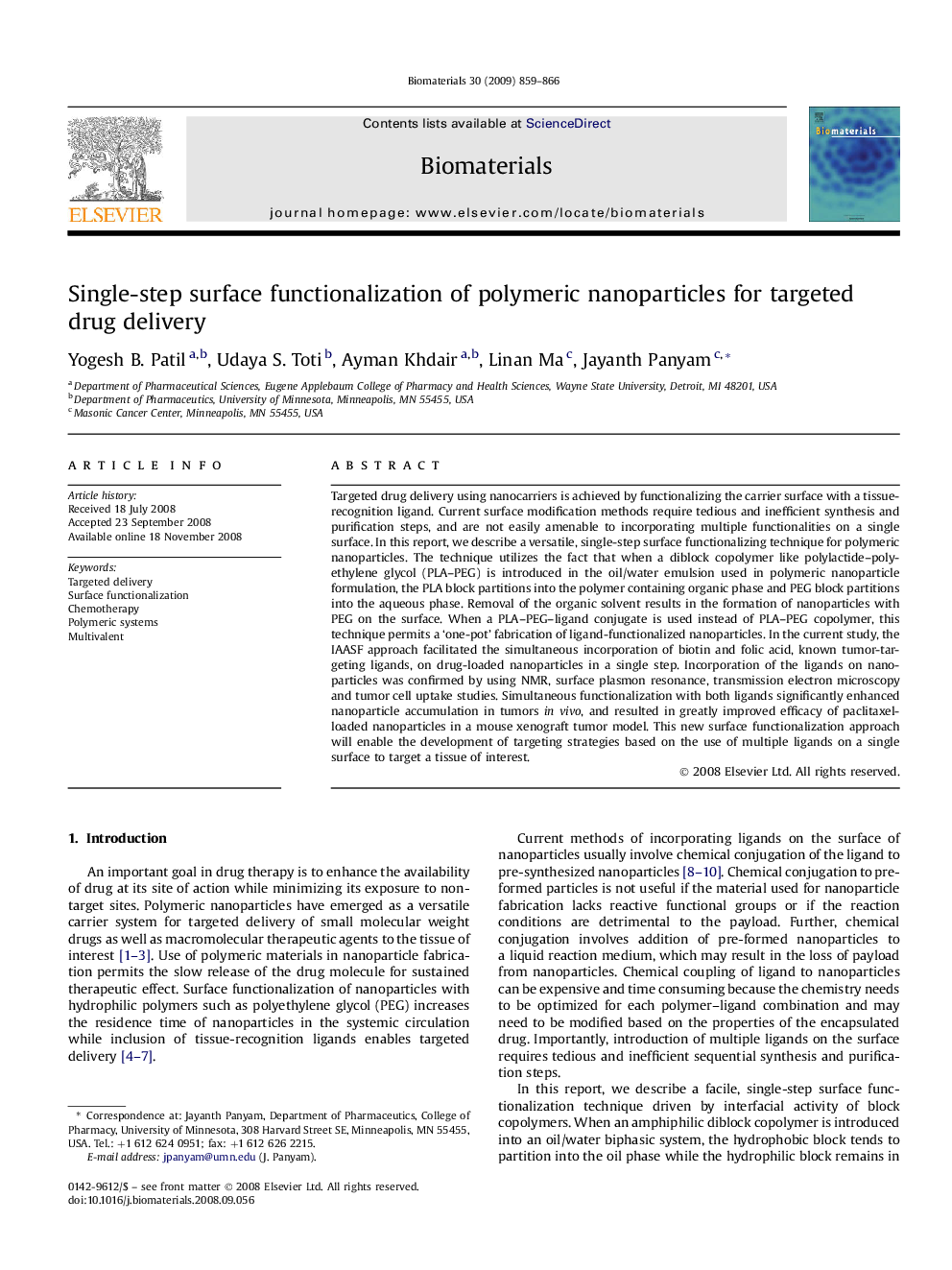| Article ID | Journal | Published Year | Pages | File Type |
|---|---|---|---|---|
| 9431 | Biomaterials | 2009 | 8 Pages |
Targeted drug delivery using nanocarriers is achieved by functionalizing the carrier surface with a tissue-recognition ligand. Current surface modification methods require tedious and inefficient synthesis and purification steps, and are not easily amenable to incorporating multiple functionalities on a single surface. In this report, we describe a versatile, single-step surface functionalizing technique for polymeric nanoparticles. The technique utilizes the fact that when a diblock copolymer like polylactide–polyethylene glycol (PLA–PEG) is introduced in the oil/water emulsion used in polymeric nanoparticle formulation, the PLA block partitions into the polymer containing organic phase and PEG block partitions into the aqueous phase. Removal of the organic solvent results in the formation of nanoparticles with PEG on the surface. When a PLA–PEG–ligand conjugate is used instead of PLA–PEG copolymer, this technique permits a ‘one-pot’ fabrication of ligand-functionalized nanoparticles. In the current study, the IAASF approach facilitated the simultaneous incorporation of biotin and folic acid, known tumor-targeting ligands, on drug-loaded nanoparticles in a single step. Incorporation of the ligands on nanoparticles was confirmed by using NMR, surface plasmon resonance, transmission electron microscopy and tumor cell uptake studies. Simultaneous functionalization with both ligands significantly enhanced nanoparticle accumulation in tumors in vivo, and resulted in greatly improved efficacy of paclitaxel-loaded nanoparticles in a mouse xenograft tumor model. This new surface functionalization approach will enable the development of targeting strategies based on the use of multiple ligands on a single surface to target a tissue of interest.
